
HOME / Departments / Earth and Planetary Sciences / Atmospheric and Geophysical Fluid Dynamics
Atmospheric and Geophysical Fluid Dynamics
-
- NAKAJIMA Kensuke, Associate Professor
- NOGUCHI Shunsuke, Assistant Professor
- The atmosphere of Earth is composed of layers with different properties, which are, from the bottom upwards, troposphere (~10 km), the stratosphere (10~50 km) including the ozone layer, the mesosphere (50~90 km), and the thermosphere (90 km~). The first focus of our investigation is the dynamics of the stratosphere and mesosphere, or the “middle atmosphere”, which is the arena of the interaction between waves of various scales and global scale circulation are manifested in pure and extreme forms affecting the environmental issues like Ozone holes and the upward and downward coupling with upper and lower atmosphere, resulting in anomalous weather patterns that we experience occasionally. The second focus is geophysical and planetary fluid dynamics, which is fundamentals of the dynamics of whole of the fluid layers both in and on planets both inside and outside of our solar system.
“Weather Forecasts” in the Middle Atmosphere
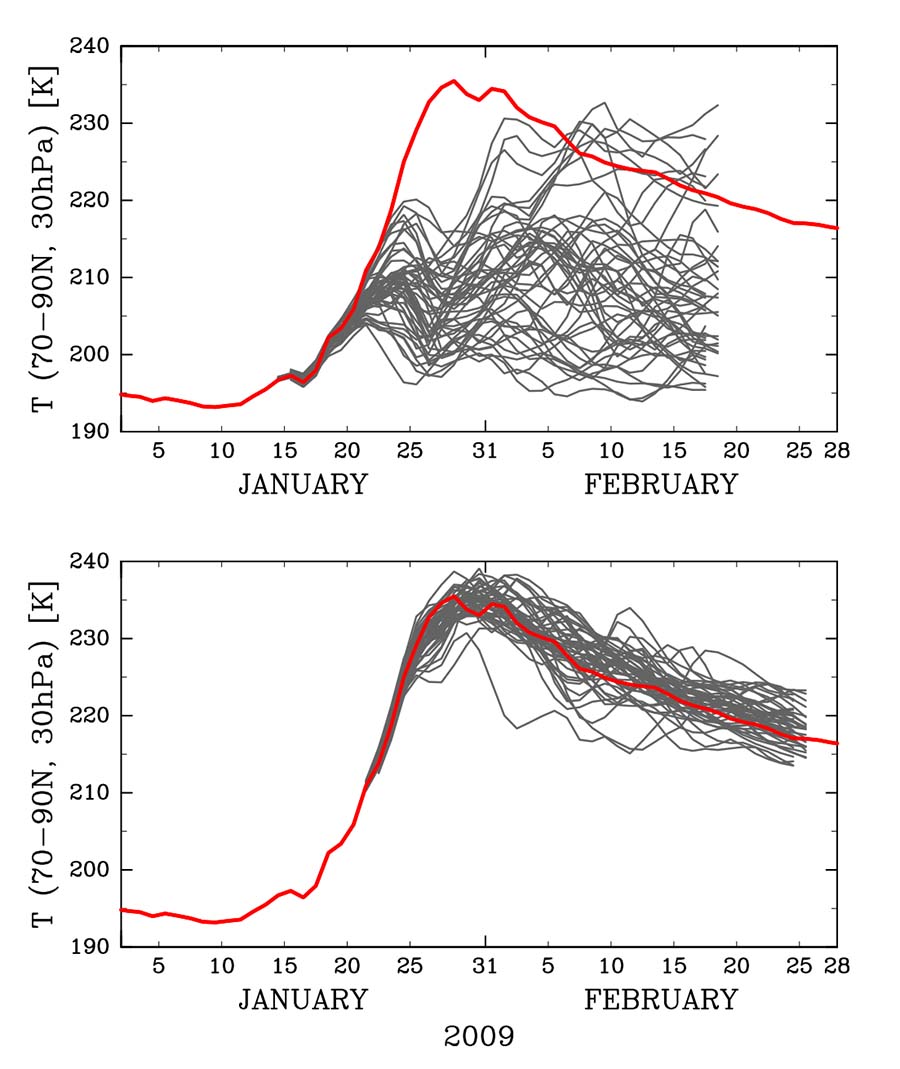
In the middle atmosphere, a unique phenomenon called “stratospheric sudden warming” (SSW) sometimes occurs, in which the temperature in the polar stratosphere rapidly rises over a few dozen degrees Kelvin within several days, a situation unimaginable in the troposphere. Figure 1 shows the time series of the stratospheric temperature over the Arctic for one winter, with observed values (red line) and predicted values (thin black lines). It illustrates the results of multiple predictions starting from slightly different initial conditions (i.e., ensemble forecasts). The observations indicate an SSW from mid to late January. The ensemble forecast initiated well before the event (upper panel) fails to capture the peak of SSW and shows a large spread among ensemble members. In contrast, all ensemble members in the forecast initiated just before the event (lower panel) accurately reproduce the warming evolution. Therefore, from this point, we could reliably predict the time evolution of this SSW. Investigating how these variations in forecast characteristics (i.e., predictability variations) are related to flow features and how they impact predictions in other regions is an important research topic.
Ozone Hole Variations and Insights into the Earth System Dynamics
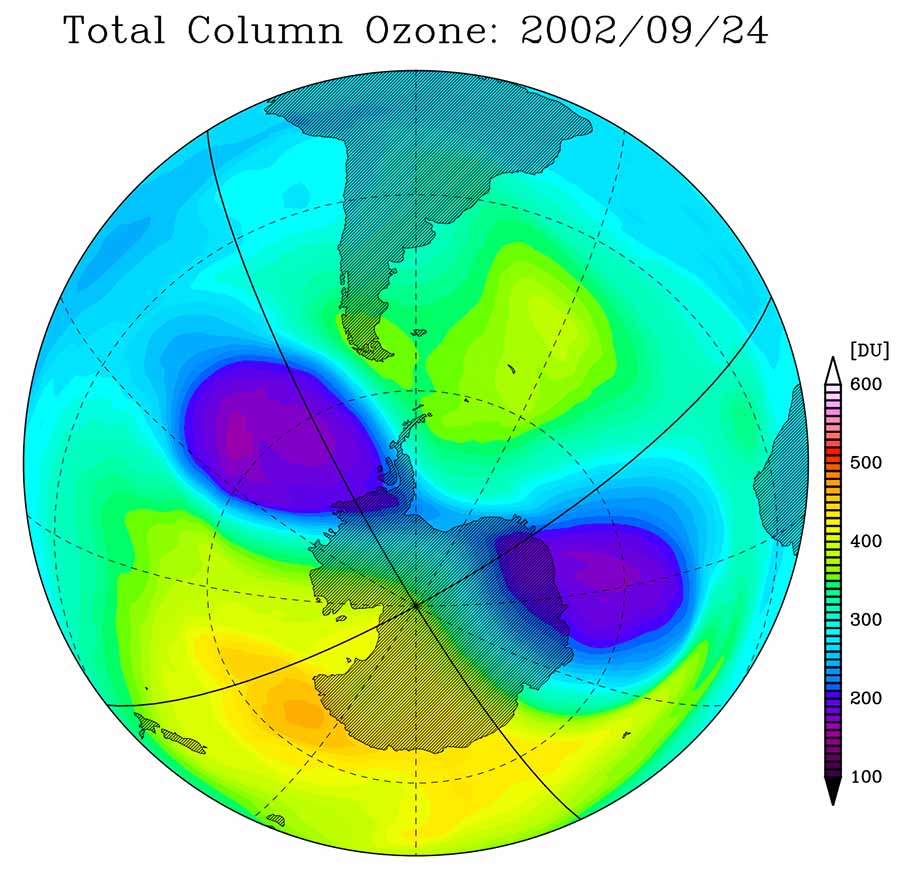
The middle atmospheric circulation is shaped by close interactions between dynamics, radiation, and chemistry. Figure 2 shows the temporary shrinking of the ozone hole, which had been developing to cover the entire Antarctic continent every spring since the 1980s, when it split into two (a very rare condition) by atmospheric dynamical variations. This example provides a suitable situation for investigating interactions with atmospheric chemistry and radiation. How does such a large-scale flow change affect material circulation and subsequently atmospheric composition? Conversely, how much do changes in atmospheric composition and radiative forcing alter the flow? By quantitatively elucidating the strength of interactions among the components of the Earth system, we can gain a more detailed understanding of the Earth's environment.
Geophysical and Planetary Fluid Dynamics
You feel and see wonders of fluids everyday – relax in the bath, feel the gentle wind in jogging, pour drops of milk in a cup of coffee. However, fluid behaves a bit differently in the far greater scales of the Earth or planets, which are the focus of Geophysical and Planetary Fluid Dynamics.
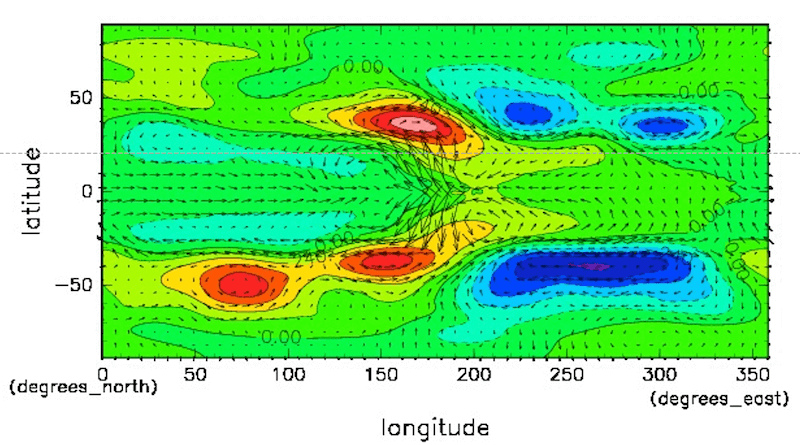
Rotation and sphericity of the Earth affect the motion of the air or water on it in a number of aspects. Figure 3 illustrates the flow driven by a localized warm water pool of Amazon size placed at the equator. We see complex structure of wind change emerge all over the globe. This result is obtained in an idealized earth, all covered with ocean, on which we see the character of flow on rotating spherical planet more clearly than on the Earth which has many complex features like continent and mountains.
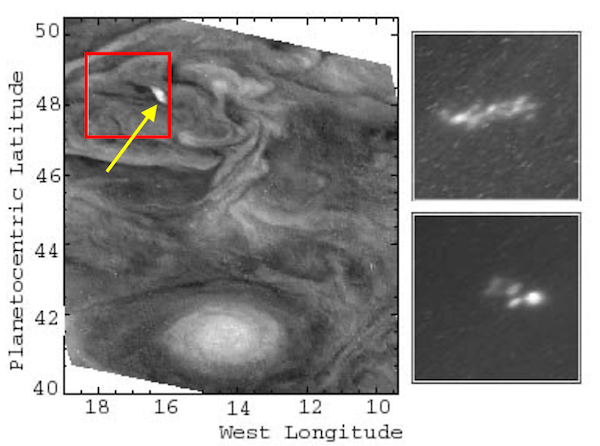
When flowing up or down in a large distance, due to the change of temperature or pressure, the phase change of material occurs in the fluids, resulting in the formation of cloud and rain. Everybody knows those on the Earth, but clouds and rain develop also in the atmospheres of planets and its satellites. Figure 4 shows lightning in the thunderstorms of Jupiter's atmosphere. Cumulonimbus clouds of methane develop in the atmosphere of Titan, the largest satellite of Saturn. There are many poorly known issues on these extraterrestrial clouds.
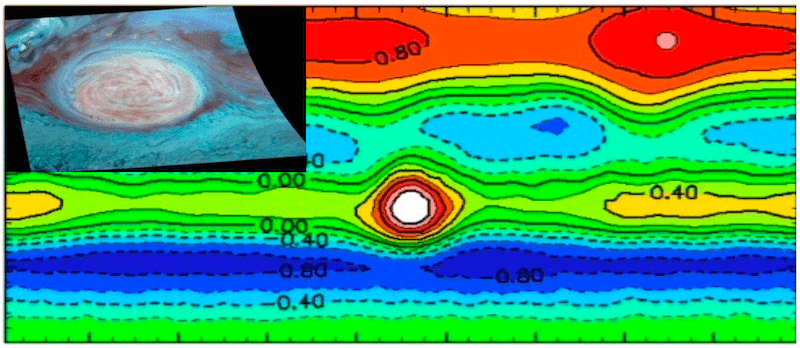
Geophysical Fluid Dynamics originates from the consideration on the dynamics of the Earth's atmosphere and oceans, and extends its field to include the fluids on and inside of other planets. For example, the behavior of the Great Red Spot on Jupiter can be understood based on the mathematical framework that has been used for the Earth's oceans (Figure 5). Now, thousands of “exoplanets” have been found around stars other than our own sun. So the development of “Pan-Planetary Fluid Dynamics”, with which possible great variety of the atmospheres and oceans can be explored and understood, is one of our dreams. Such framework should be useful also in considering the environment of our own Earth in the distant past and future.